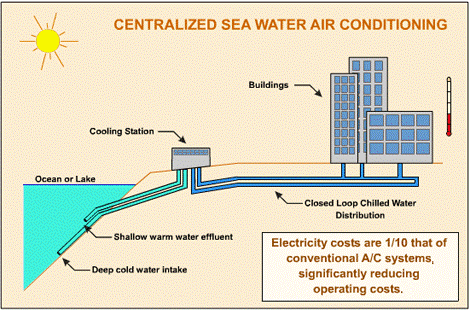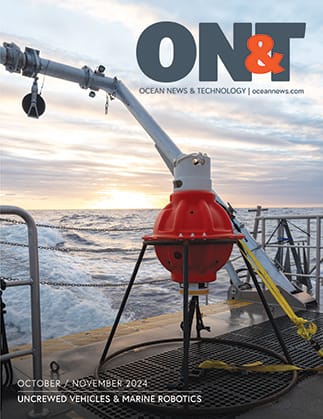Makai Ocean Engineering, Inc. has completed a contract by the Office of Naval Research (ONR) through the Hawaii Natural Energy Institute (HNEI) to research and develop Seawater Air Conditioning (SWAC) technology. SWAC is a method to provide cold air conditioning to buildings using a district cooling system that uses an available cold water reservoir as its source (usually deep cold water from a lake or ocean). SWAC can provide air conditioning using about one-tenth of the energy required for conventional air conditioning. The Navy has recently expressed interest in implementing SWAC district cooling systems at island bases using the Energy Savings Performance Contract (ESPC) model.
Makai’s SWAC study produced a software tool that is capable of quickly and accurately assessing the feasibility of a SWAC system anywhere in the world. Makai had previously been in continuous development of the predecessor of the software (dubbed the “SWAC Model”) during the last 20 years of design and development of SWAC systems, and the recently completed project provided a major overhaul and upgrade.
The cost with the greatest uncertainty for SWAC is often the deep seawater pipeline. Accordingly, the most critical input for any SWAC feasibility or cost analysis is often accurate pipeline construction cost data, which Makai has been providing as a part of successful pipeline projects worldwide over the last 35 years. During the study, the existing SWAC Model was improved by upgrading it to a modern programming language and incorporating new cooling technologies, which may enable SWAC systems to achieve the same cooling comfort as earlier SWAC designs using lower flows and warmer seawater. These improvements would mean smaller and shorter cold water pipelines for a given cooling load and an increased number of economically feasible SWAC sites worldwide. Finally, Makai validated the software by running several hypothetical scenarios for SWAC systems at Navy bases. These improvements have increased the scope of the model to include modern air conditioning systems, reduced the time and cost required for a SWAC feasibility study, and broadened the applicability of SWAC to sites that were previously thought to be infeasible.

